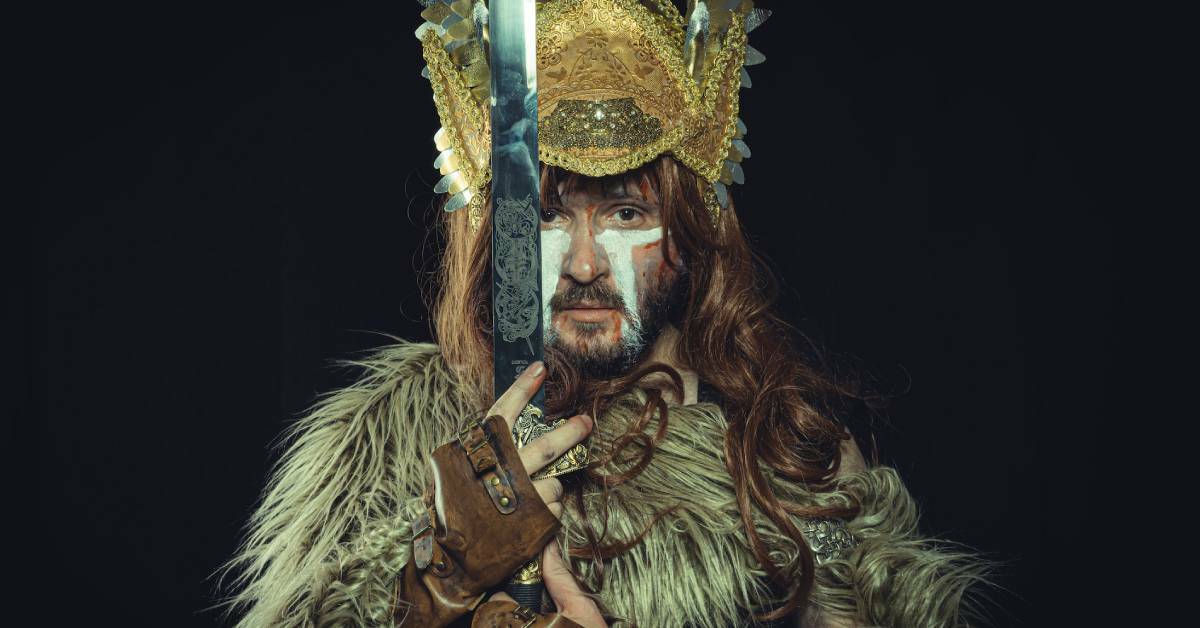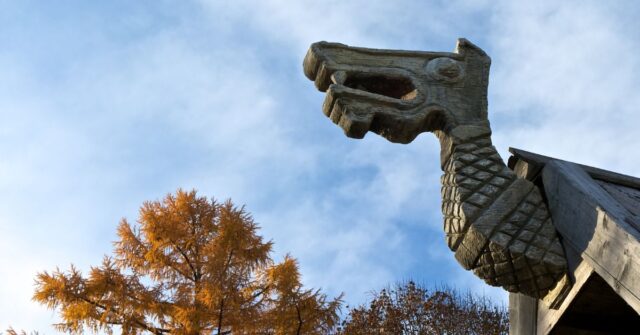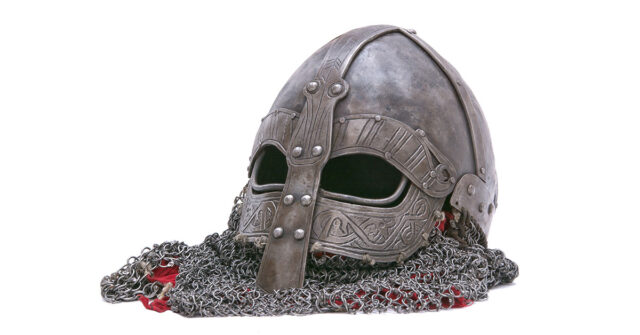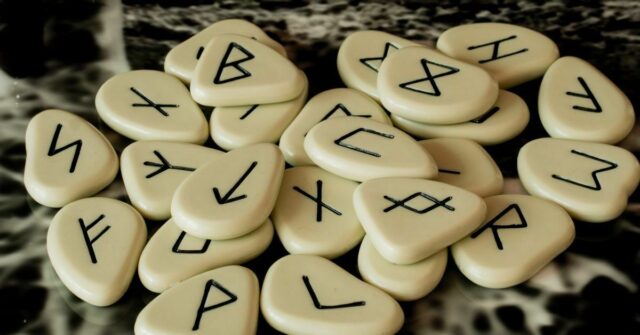This guide aims to walk you through the exciting journey of selecting and assembling your Viking costume, from understanding the components to maintaining your outfit.
Whether you’re getting ready for a fun Halloween event, a Renaissance Faire, or a historical reenactment, we’ll help you to embrace your inner Viking with style and authenticity.
Introduction to Viking Culture and Costumes
Before we dive into the components of a Viking costume, it’s crucial to understand who the Vikings were and why their attire holds significance.
The clothing and accessories they wore were not merely functional but also a reflection of their status, occupation, and rich cultural heritage.
Who Were the Vikings?
The Vikings were seafaring people from the late eighth to early 11th century. They hailed from the Scandinavian regions of Norway, Denmark, and Sweden and embarked on expansive voyages, which have become iconic in history.
Their clothing, often made from wool, linen, and animal skins, was designed for functionality in their harsh climates and lifestyle.
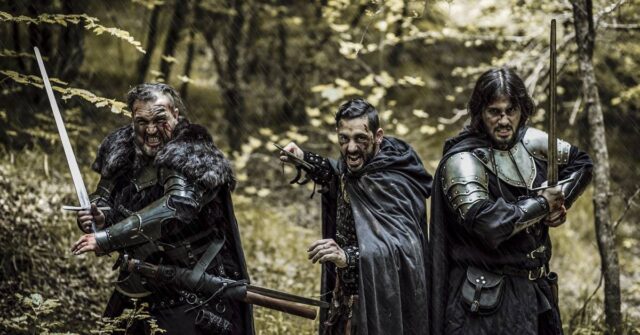

Significance of Viking Attire
Viking attire was more than just clothing; it was a representation of a person’s role in society. Warriors had different attires than farmers, and leaders often wore more elaborate outfits to display their status.
Each garment and accessory in a Viking costume contributes to its historical accuracy and creates a compelling image of the Viking era.
Understanding the Components of a Viking Costume
Viking costumes consist of several key components, including garments like tunics and cloaks, along with accessories such as helmets, shields, and jewelry. Let’s delve into each element to give you an idea of what you need for a complete Viking costume.
Viking Tunics and Dresses
The primary garment for both Viking men and women was the tunic. Men’s tunics were generally knee-length, while women wore longer dresses that reached their ankles.
These were typically made of wool or linen and came in natural colors such as browns, greys, and whites.
Viking Trousers
Viking men wore trousers under their tunics, made from the same materials. These were typically loose-fitting and designed for comfort and ease of movement, perfect for the active Viking lifestyle.
Viking Cloaks
Cloaks were a crucial part of Viking attire, offering protection from the cold Scandinavian weather. These were often made of heavy wool and fastened with a brooch or a pin at the shoulder.
Viking Shoes
Vikings wore simple leather shoes, typically made from a single piece of leather stitched together with leather laces. These were functional and robust, designed to withstand their challenging environments.
The Importance of Accessories in a Viking Costume
Accessories are what distinguish a good Viking costume from a great one. They add authenticity and detail, helping to create a compelling and believable Viking image. Let’s explore some of the main accessories that you’ll want to include in your costume.
Viking Helmets
Despite popular belief, Viking helmets did not have horns. They were simple, functional pieces made of iron or leather, often featuring a nose guard for added protection.


Viking Shields
Shields were a vital part of a Viking warrior’s equipment, used for both defense and attack. Round and made from wood, they make an impressive addition to any Viking costume.
Viking Jewelry
Jewelry was common among Vikings, with both men and women wearing items such as bracelets, necklaces, and rings. These pieces often featured intricate designs and were made from silver, bronze, or even gold.
Viking Belts and Pouches
A sturdy leather belt was an essential part of a Viking’s attire, often used to carry tools or weapons. Pouches provided additional storage and make a practical addition to your costume.
Viking Weapons
No Viking costume would be complete without a weapon. Choose from axes, swords, or spears to add an extra layer of authenticity to your outfit.
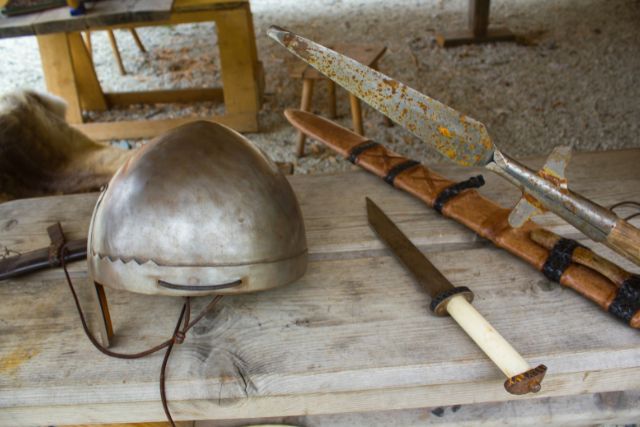

Assembling Your Viking Costume
Now that we’ve discussed the various components of a Viking costume, it’s time to assemble your outfit. Here we’ll cover everything from choosing the right materials and colors to fitting and layering your costume.
Choosing the Right Materials
Historically, Vikings used materials like wool, linen, and leather for their clothing and accessories. Try to choose materials that mimic these textures for a more authentic look.
If you’re making your costume from scratch, opt for natural-colored fabrics to replicate the Viking era’s tones.
Considerations for Color and Design
Most Viking clothing was simple and practical, with minimal decoration. Keep your colors earthy and natural – shades of brown, grey, and white are all good choices.
For added authenticity, you can incorporate some simple embroidery or Nordic symbols into your design.
Layering Your Viking Costume
Layering is key to a realistic Viking look. Start with a basic tunic or dress, then add trousers (for men), a belt, a cloak, and finally your accessories.
Remember to balance your look – if you have a highly decorative shield, for example, keep your other accessories more simple.
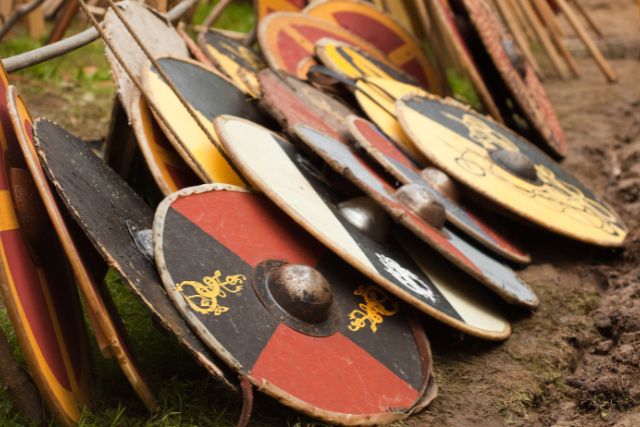

Fitting and Adjusting Your Costume
Viking clothing was designed for practicality, so your costume should be comfortable and easy to move in. Tunics and dresses should be loose-fitting, and belts should sit comfortably without restricting movement.
Don’t forget to wear your shoes a little before the big event!
Viking Costume for Different Occasions
Your Viking costume can be adapted to suit various occasions. Whether you’re planning to attend a Halloween party, a Renaissance Faire, a cosplay event, or a historical reenactment, you can tailor your outfit to fit the context.
Halloween Viking Costumes
For a Halloween Viking costume, feel free to get a little creative. You might want to include some ‘fantasy’ elements – like the historically inaccurate but visually striking horned helmet – or play up the ‘warrior’ aspect with plenty of weapons.
Renaissance Faire Viking Costumes
Renaissance Faire costumes tend to be more historically accurate, so stick to the basics here. Keep your outfit simple and authentic, with a focus on quality materials and craftsmanship.
Cosplay Viking Costumes
Cosplay offers a lot of room for creativity. You could choose to replicate the costume of a specific Viking character from film or television or create your unique Viking persona. Remember, the key to great cosplay is in the details!
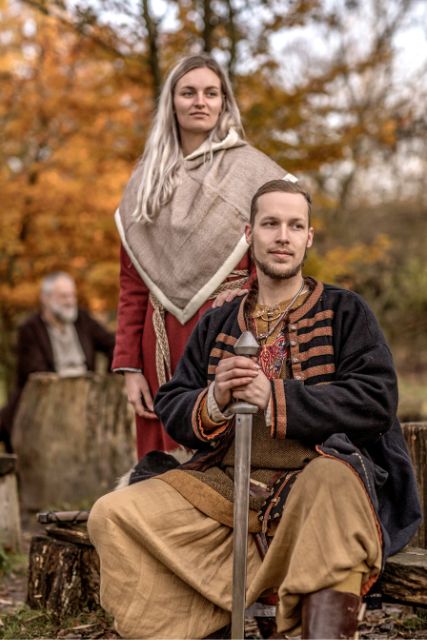

Historical Reenactment Viking Costumes
For a historical reenactment, accuracy is paramount. Do your research and aim to replicate a specific Viking outfit as closely as possible.
Remember to consider the role and status of the character you’re portraying – a Viking leader’s outfit, for example, would be more elaborate than a farmer’s.
Viking Costumes for All Ages and Genders
Viking costumes are versatile and can be adapted for all ages and genders. From fierce Viking warriors to everyday villagers, there’s a Viking look for everyone. Let’s explore some options for adults, children, women, and men.
Viking Costumes for Adults
Adult Viking costumes are often more detailed and historically accurate. You have the freedom to play with different elements like quality materials, intricate accessories, and detailed designs.
Remember, your costume should reflect the role and status of the Viking character you’re aiming to portray.
Viking Costumes for Children
When creating a Viking costume for a child, focus on comfort and safety. Ensure the materials are soft and non-irritating, and avoid small accessories that could be a choking hazard.
You can still have fun with the design, perhaps including a plush shield or a simple tunic with a Viking symbol.
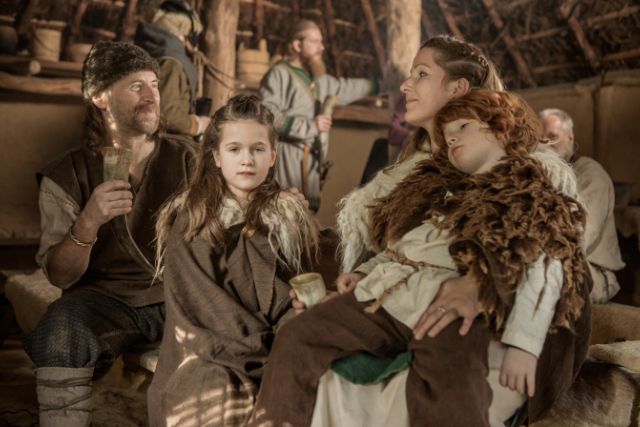

Viking Costumes for Women
Women in the Viking era wore long dresses with belts at the waist, often accompanied by a cloak for warmth. Accessories like brooches and bracelets can add detail to the costume.
Remember, Viking women had roles ranging from housekeepers to warriors, so there’s plenty of room for creativity.
Viking Costumes for Men
Men’s Viking costumes typically include a tunic, trousers, and a belt. Adding a cloak, a helmet, and a weapon can enhance the warrior look. Keep in mind that Viking men’s attire reflected their job and status, so tailor your costume accordingly.
Maintaining and Storing Your Viking Costume
After you’ve invested time and effort into creating your perfect Viking costume, you’ll want to ensure it lasts for future uses. Proper cleaning, care, and storage are essential to maintaining your costume’s quality and longevity.
How to Clean and Care for Your Costume
Cleaning methods depend on the materials used in your costume. Most fabric pieces can be hand-washed or machine-washed on a gentle cycle.
Leather items should be wiped clean and treated with a leather conditioner. Always check the care instructions for any store-bought pieces.
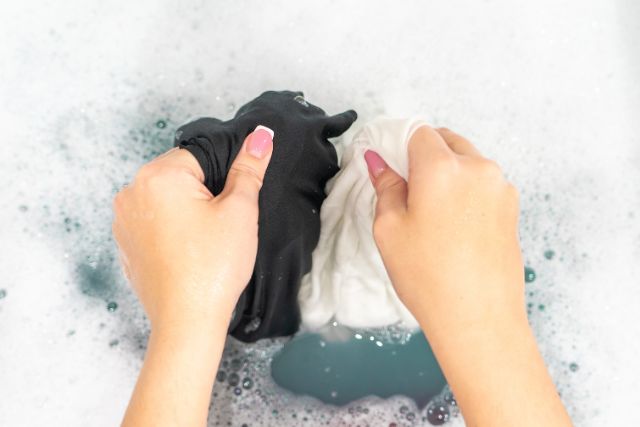

Proper Storage Techniques
When not in use, store your costume in a cool, dry place away from direct sunlight. Consider using garment bags for fabric pieces to protect them from dust and insects. Store accessories separately to prevent them from damaging the clothing items.
Conclusion: Embrace Your Inner Viking
Creating a Viking costume can be a fun and rewarding process, allowing you to explore the rich history and culture of the Viking era.
Whether you’re aiming for historical accuracy or adding a dash of fantasy, the key is in the details. So embrace your inner Viking, don your helmet, and step into the past with confidence and style.

